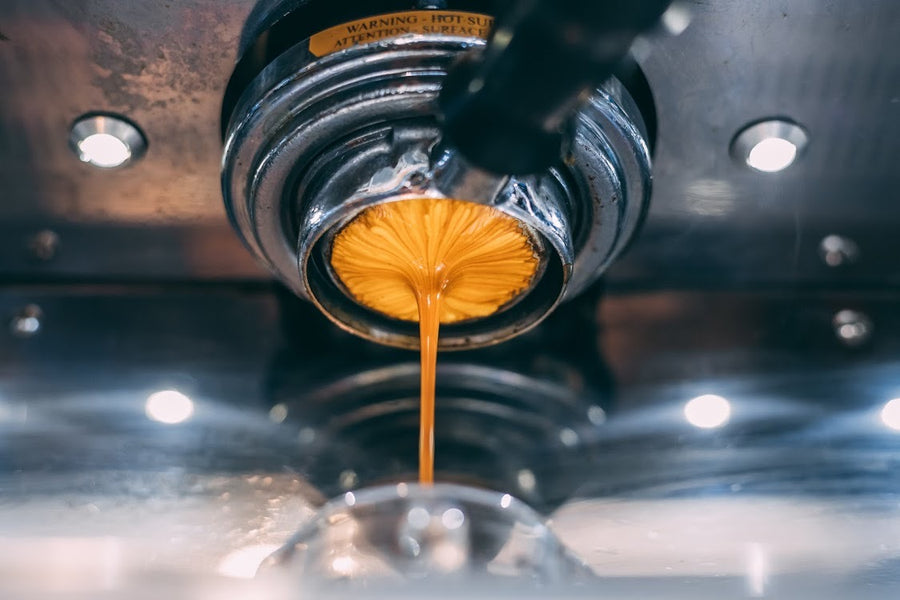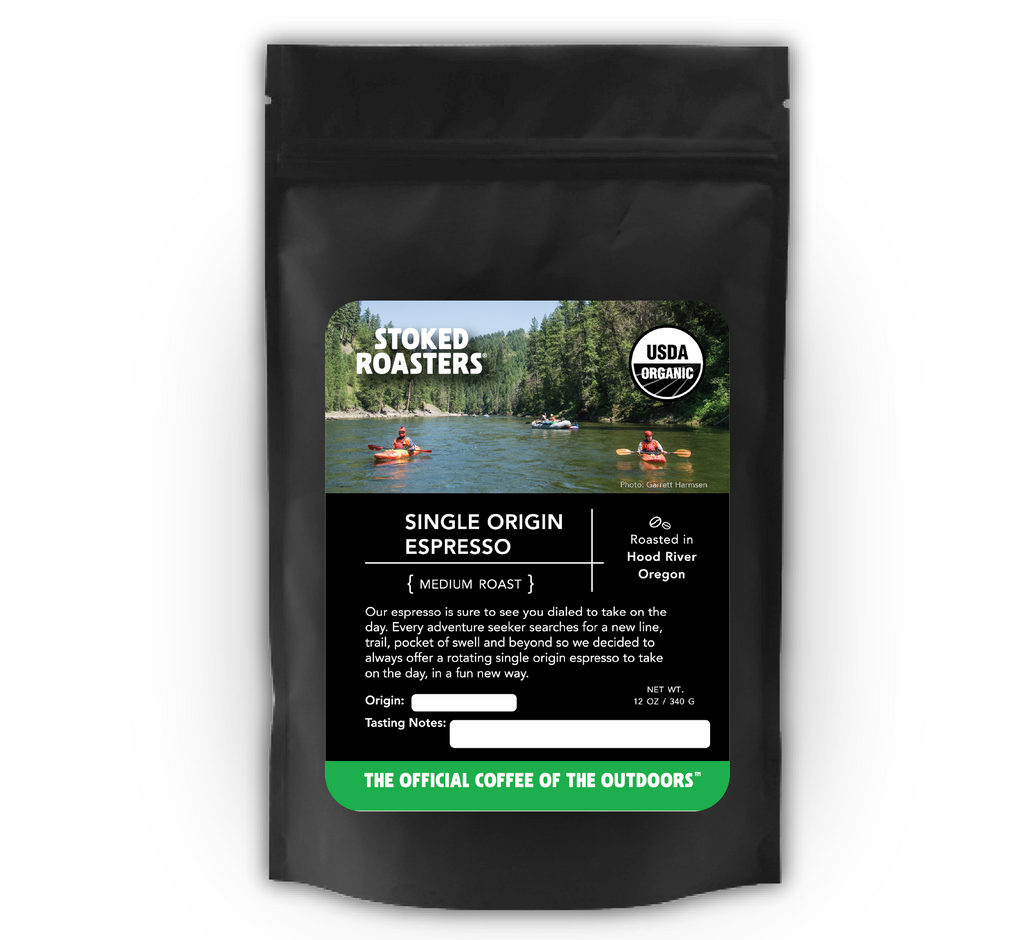SOE Single Origin Espresso – Showcasing Flavors from One Region
SOE Single Origin Espresso – Showcasing Flavors from One Region
Blog Article
Checking Out the Abundant Tastes of Coffee Beans: a Deep Dive Into Espresso and Blended Coffee Beans
When you discover the abundant flavors of coffee beans, you discover a complicated world where each range brings its own personality to your mug. As you browse through the art of coffee and the creative thinking behind mixed coffees, you'll start to value the nuances that make each sip special.
The Beginnings of Coffee Beans: Exploring Terroir and Flavor Profiles
When you take a sip of coffee, you're not just delighting in a beverage; you're experiencing an abundant tapestry of tastes shaped by the beans' origins. Each area generates special taste profiles affected by soil, elevation, and climate. As an example, beans from Ethiopia typically burst with bright, fruity notes, while those from Colombia often tend to use a well balanced, nutty sweet taste.
As you explore various origins, you'll observe how terroir-- the ecological aspects affecting a plant-- plays an important role - Single Origin Espresso. The exact same coffee variety can taste significantly various relying on where it's grown
When you take into consideration these elements, you start to value the complexity behind your mug. Each sip informs a story of the land and the farmers that nurtured the beans. So, next time you delight, consider the journey your coffee took prior to it reached your hands, and enjoy those elaborate tastes that show its beginning.
Comprehending Espresso: The Art and Science Behind the Brew
When you think of coffee, it's not simply regarding the solid taste; it's additionally about the methods that bring it to life. Understanding how various preparation techniques influence preference can change your brewing experience. Let's explore the ins and outs of espresso preparation and uncover the special flavor accounts that make each cup special.
Espresso Preparation Strategies
Coffee preparation is both an art and a scientific research, integrating exact methods with a deep understanding of coffee. To start, you'll wish to pick top quality, newly roasted beans and grind them carefully for excellent removal (Single Origin Espresso). The grind dimension is crucial; as well coarse, and your coffee will certainly be weak, as well fine, and it'll be bitter
Following, tamp the grounds evenly in the portafilter to assure consistent removal. When you lock it into the equipment, go for a brewing temperature level in between 190 ° F and 205 °
F.As you pull the shot, expect the best extraction time-- around 25-30 secs. The result should be an abundant, luscious coffee with a lovely layer of crema ahead. With method, you'll grasp these techniques.
Taste Profiles Explained
The world of espresso provides an abundant tapestry of flavor accounts that can boost your coffee experience. Light roasts commonly showcase intense acidity and dynamic flavors, while dark roasts existing much deeper, bolder tones.
A well-crafted mix could balance the brilliant notes of an Ethiopian bean with the rich, chocolatey undertones of a Brazilian bean. Welcome the trip of finding espresso's diverse tastes, and you'll change your coffee ritual into an exciting experience.
Handling Approaches: Exactly How They Influence Flavor and Aroma
While it could appear that the origin of coffee beans is the most considerable aspect in identifying their flavor and fragrance, the handling techniques used post-harvest play an equally necessary function. You'll find that these approaches can significantly alter the last taste account of your cup.
As an example, the washed process removes the fruit from the beans prior to fermentation, commonly resulting in a cleaner, brighter flavor. The all-natural process leaves the fruit undamaged during drying out, resulting in a sweeter, fruitier account.
Other techniques, like honey handling, strike a balance, enabling some fruit mucilage to continue to be, supplying a special complexity.
Each handling method interacts with the beans' intrinsic attributes, improving or silencing specific flavors and fragrances. So, when you sip that coffee or mixed coffee, bear in mind that the trip from cherry to cup is influenced not just by beginning yet also by exactly how those beans were refined.
Roasting Methods: Opening the Complete Potential of Coffee Beans
Roasting methods are crucial for exposing the complete possibility of coffee beans, as they change raw, green beans into the aromatic, flavorful coffee you delight in. The option of roasting technique-- light, medium, or dark-- substantially influences taste profiles.
A slower roast at reduced temperatures allows for intricate tastes to establish, while a quicker roast can magnify bitterness. By understanding these strategies, you'll disclose a globe of flavor, boosting your coffee experience to brand-new heights.
The Magic of Blended Coffee: Creating One-of-a-kind Taste Experiences
Producing a distinct flavor experience with combined coffee can change your early morning routine right into an expedition of preference. By combining various beans from various areas, you can disclose a harmony of tastes that raise your mug to new heights. Each mix offers a distinct account, balancing acidity, body, and sweetness to develop something really unique.
When you choose a mix, you're not just picking a coffee; you're choosing a journey across varied landscapes and cultures. Explore different combinations Single Origin Espresso permits you to find your personal faves, whether you take pleasure in fruity notes or rich, chocolatey undertones.

Tasting Notes: Identifying the Nuances in Your Mug
As you drink your coffee, you might discover a range of tastes dancing on your palate, each exposing the intricacies of the beans. You may taste the brilliant level of acidity reminiscent of citrus or the deep, rich notes akin to dark chocolate. The sweetness might stimulate honey or caramel, balancing the general profile perfectly.
Take note of the body of the coffee-- does it feel light and ventilated, or is it complete and luscious? The coating, also, supplies clues; a remaining aftertaste might mean nuttiness or floral undertones.

Do not neglect to discover the special features of various beginnings, as each area passes on distinct tastes - Single Origin Espresso. As an example, Ethiopian coffees typically present fruity notes, while Colombian beans could display a much more rounded sweet taste. By acknowledging these nuances, you'll grow your recognition for each and every mug, raising your coffee experience to new elevations

Developing Methods: Maximizing Flavor Removal for every single Bean
When you check out the different brewing approaches, you'll discover that each method can substantially impact the taste account of your coffee. From French press to pour-over, each method removes different compounds, enhancing or muting certain notes. Utilizing a French press permits oils to continue to be in the brew, developing a richer taste, while pour-over stresses clarity and brightness.
Temperature and grind dimension additionally play crucial roles. A coarser grind functions best for cool brews, while a fine work is excellent for espresso. Try out water temperature-- in between 195 ° F and 205 ° F-- can reveal concealed flavors, as well.
Do not ignore steeping time; a fast extraction can bring about sour notes, while over-extraction may generate bitterness. By changing these variables, you can make best use of flavor removal and truly raise your coffee experience. Enjoy the journey of finding what approach finest suits your taste buds!
Regularly Asked Questions
What Is the Suitable Water Temperature Level for Brewing Coffee?
The ideal water temperature level for developing coffee's between 195 ° F and 205 ° F. If you utilize water that's as well warm, you'll over-extract flavors; too cold, and you won't remove enough. Objective for that pleasant area for the best brew!
Just How Does Grind Dimension Influence Coffee Taste?
Work size significantly impacts coffee flavor. Finer grinds extract more oils and flavors, causing a bolder preference, while coarser grinds yield a lighter flavor. Adjusting work size aids you attain your preferred coffee profile.
Are There Health Benefits Associated With Alcohol Consumption Coffee?

What Is the Distinction Between Arabica and Robusta Beans?
Arabica beans are smoother and sweeter, often including fruity flavors, while robusta beans are more powerful with a bitter preference and greater caffeine web content. You'll discover these distinctions in scent and developing experience.
Exactly How Can I Shop Coffee Beans for Freshness?
To save coffee beans for freshness, maintain them in an airtight container, far from light, warm, and wetness. You'll preserve their flavor longer if you just grind what you require right before developing.
Checking Out the Abundant Tastes of Coffee Beans: a Deep Dive Into Coffee and Blended Coffee Beans.
When you check out the abundant tastes of coffee beans, you discover a complicated world where each range brings its very own character to your mug.When you take a sip of coffee, you're not simply appreciating a beverage; you're experiencing an abundant tapestry of tastes shaped by the beans' origins.Roasting techniques are vital for revealing the complete potential of coffee beans, as they change raw, green beans right into the aromatic, flavorful coffee you enjoy.As you sip your coffee, you could discover a spectrum of flavors dancing on your palate, each exposing the intricacies of the beans.
Report this page